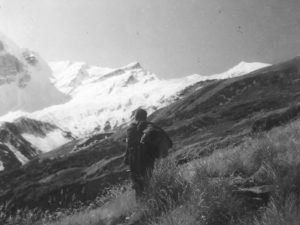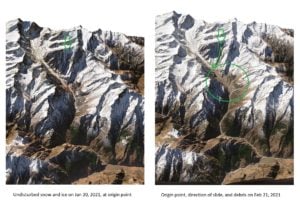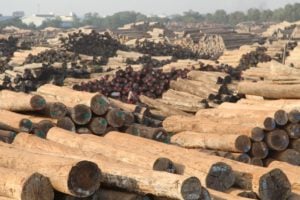The cool summer nights in the scenic Hunza valley of Pakistan’s Gilgit-Baltistan province turned unpleasant last month. In late May, a lake at the base of the Shishper glacier flooded, displacing at least 20 residents in the downstream village of Hassanabad and damaging a half-built power station.
Akber Hussain, a villager in his late 50s, looked helpless as he and his family packed up household items.
Hussain and other residents across the village made desperate efforts to save the wooden panels that made up the structure of their mud homes. They feared that within hours everything they owned would be swept away by rapid currents of glacier meltwater. At least three families were moved to a tent provided by the Aga Khan Agency for Habitat, an NGO that helps communities prepare for and respond to natural disasters, as they had no way of constructing a new home.
“My lands have either been swept away by the floods or are at constant risk of being destroyed,” Hussain told The Third Pole.
A glacier surge and a lake outburst
Many families live in constant fear of floods due to the formation and reformation of a massive glacial lake. This was created in the wake of the unabated surging of the Shishper glacier, and is one of the 36 dangerous glacial lakes in Gilgit-Baltistan.
A glacier surges when ice in its lower layers melts faster than the top layers. Though surging is not a common occurrence, when it does take place it happens in large glaciers as a result of sudden warming. As lower layers melt, a huge amount of ice sits on top of thawed ice and meltwater, causing the top layer to slip and move down the slope: a glacier surge. If the surge is strong, the top layer moves beyond the original snout (end of the glacier), and begins to melt quickly. This can lead to a flood.
A glacier typically melts drop by drop at the snout. Some of those drops percolate into the ground, others form a very small stream and then flow down the mountain slope. Ultimately those streams join to form a river. As global warming accelerates glacial melt, more water is released than the stream or the ground can hold. Meltwater accumulates at the snout, forming a glacial lake.
Since 2018, the advancing Shishper glacier has moved down the slope and blocked the outlet of the nearby Muchuhur glacier, resulting in the creation of an ice-dammed glacial lake.
High temperatures accelerate glacial melt, swelling the lake. A breach would result in a glacial lake outburst flood (GLOF) that could damage thousands of homes in the Hunza valley.
In October last year, the Shishper glacier surged again. The freezing temperature then slowed down the flow of the water. But as the temperature rose in the spring, glacial melt accelerated and water started flowing, leading to the GLOF.
A glacial lake outburst flood (GLOF) is caused by a sudden release of water from a glacial lake. This happens when the lake swells up because the glacier is melting faster. The lake bursts out in flood when the weight and volume of the water cannot be contained by its banks any more. This has the potential to do immense damage.
In 2015, a crisis unfolded in Pakistan’s mountainous Chitral valley, where flash floods and GLOFs killed three people, destroyed houses and swept away roads and infrastructure. Around 250,000 were left stranded. In neighbouring India, the 2013 GLOF in Uttarakhand impacted more than 100,000 people, led to the deaths of thousands, and caused immense damage to infrastructure. GLOFs have killed people in Nepal and threatened entire valleys in Bhutan.
“Surging glaciers like Shishper have lakes underneath the ice in the ablation zone [area where melting exceeds ice accumulation], mostly near the terminus [the snout or end of the glacier],” said Ghulam Rasul, the regional programme manager at the International Centre for Integrated Mountain Development (ICIMOD).
Rasul, who was previously director-general at the Pakistan Meteorological Department, added: “When an ice mass drifts downward in the early summer, these lakes are bulldozed to release the accumulated water. As the glacier advances, the ice mass blocks the flow much like an ice dam, which again has high potential to generate flooding downstream.”
ICIMOD has described the glacier’s surge in the past as “unpredictable”, “sporadic” and “risky”. Shishper has surged at least three times since 2018, when it moved 1,800 metres and blocked the stream starting from the snout of the Muchuhar glacier. This led to the formation of a glacial lake.
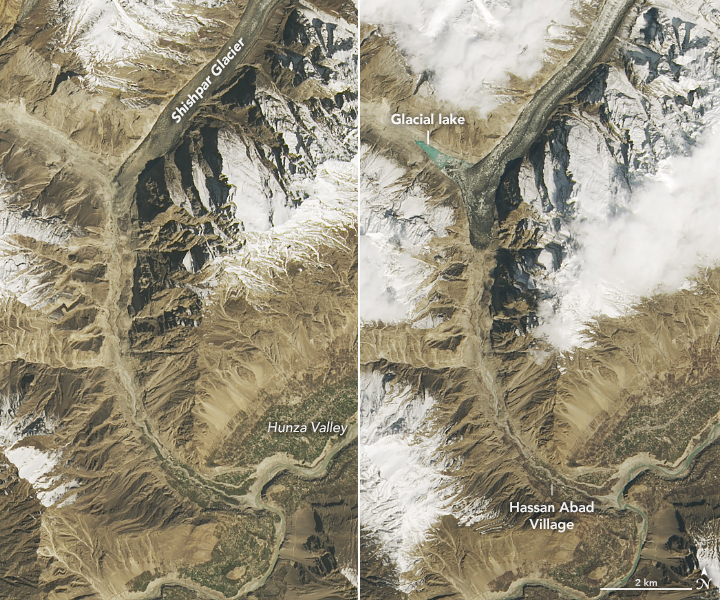
Though the damage last month was limited due to precautionary measures and mitigation efforts, a new study suggests episodes like this will become more frequent and devastating.
Researchers from the University of Geneva and the Xinjiang Institute of Ecology and Geography of the Chinese Academy of Sciences said in a study published last month that glacial lake outburst floods will become much more common in the high mountain ranges of Asia.
“The highest GLOF risk is at present centred in the eastern Himalaya, where the current risk level is at least twice that in adjacent regions. In the future, GLOF risk will potentially almost triple as a consequence of further lake development, and additional hotspots will emerge to the west, including within transboundary regions,” said the study authors.
Markus Stoffel, professor of earth and environmental science at the University of Geneva and a co-author of the study, said in a statement: “The speed at which some of these new hazardous situations are developing surprised us. We are talking a few decades not centuries – these are timeframes that demand the attention of authorities and decision-makers.”
Communities at risk
Rasul of ICIMOD said that the Shishper glacier in Hunza “is a partially debris-covered surging glacier which has developed supraglacial lakes”.
“In the early summer, when the melt rate increases, these lakes hold a huge volume of water then suffer an outburst beyond their capacity,” he told The Third Pole.
Rasul added: “[The outburst] carries mud, boulders and a gushing momentum of water with huge potential to cause damage to human settlements, land and infrastructure downstream. This is almost a regular annual feature of this glacier.”
Rasul said that another factor is the glacier’s meandering gorge, which fills the lake with meltwater. In the winter this happens gradually and is gently released when the lake overfills. But in early summer accelerated melting fills it rapidly. This, in addition to the glacial surge, makes the water burst the lake’s banks.
“Increasing temperatures, accelerated melting and enhanced drift velocity have resulted in such disasters,” he said.
“For communities living downstream, surging and bursting glaciers are always a risk,” he said, adding that the lake outburst “creates havoc”.
“Livelihoods in these mountain communities are linked with small-scale patchy agricultural lands and fruit orchards, which are badly eroded by such outbursts,” he said.
Village lives in fear of glacial floods
The threat of floods has given Hassanabad villagers sleepless nights for the past three years.
The 1,300-metre-wide, 600-metre-tall Shishper glacier is just 4 km from the highway and Hassanabad village, where there are about 170 households.
Last year, floods induced by the glacier were quite severe. Several homes, acres of land, trees and two power stations were affected, resulting in a serious power crisis in the entire Hunza district.
According to authorities, up to 20 houses in the village are at serious threat in the event of a moderate flood, with more than 80 houses under threat if there is high-scale flooding from the glacier water.
Community leader Tariq Jamil said that historically, the Shishper glacier and adjoining Muchawar glacier surged concurrently in cycles of 40-45 years. “But during the recent cycle, only the Shishper glacier surged. The moving of the single glacier created a gap inbetween the two and caused the formation of a huge glacier lake.”
Jamil said that in 2019, “the glacier surged by at least seven metres within 24 hours”.
“This has become a nightmare and a chronic phenomenon. We have to live with it, but with effective mitigation measures,” Jamil added.
He also said that since 2018, 80% of the land along the glacier water stream has been eroded. “But so far no compensation has been given to the affectees by the government.”
GLOF mitigation measures in place
Just before the flood in late May, the Gilgit-Baltistan government declared an emergency in some parts of the district and began evacuations as a precautionary measure. The authorities also diverted traffic on the Karakoram Highway from 15-18 May towards the Negar side. The highway is the sole land route between Pakistan and China.
Jamil said that this year the mitigation and precautionary measures by communities and volunteers with the support of the military and Gilgit-Baltistan Disaster Management Authority helped save lives and property.
“We constructed long, deep channels to drain the water which helped to reduce 90% of water-erosion losses,” he said. But the water flow was so fast and high that the protective channels were again damaged.
He highlighted the need to “construct a strong protected channel with capacity to outflow water of at least 10,000 cubic feet per second”.
“The constant threat is always there and we need more effective measures to avoid future losses,” said Jamil.
There is no shortcut to slow down rapid glacial melt while the atmosphere is continuously warmingGhulam Rasul, ICIMOD
Wali Khan, director-general of the Gilgit-Baltistan Disaster Management Authority, said that a higher level of damage was initially expected. However, controlled release, excavation of the channel and mitigation work done at vulnerable spots enabled the discharge of water in a controlled manner.
Although he said the current threat has subsided, “glaciers can surge at any time and we cannot rule out future risks”.
“We remain vigilant and will tackle the situation. The federal government has also committed to helping us,” said Khan, adding that the inclusion of the Shishper glacier to the GLOF-II project of the United Nations Development Programme (UNDP) would help with effective mitigation.
The GLOF-II project is a joint initiative between Pakistan’s Ministry of Climate Change and the UNDP. Building on measures piloted by GLOF-I, the GLOF-II project is described by the UNDP as aiming to empower communities to identify and manage risks associated with GLOFs and related impacts of climate change, strengthen public services to lower the risk of disasters related to GLOFs, and improve community preparedness and disaster response.
Farrukh Bashir, director of the Meteorological Department in Gilgit-Baltistan, said that last year the department installed an early warning system at the Shishper glacier and assessed glacier surge and lake formation potential.
“In light of the risk assessment, coordinated measures by government and local communities were taken to channelise the water to safely drain the flood water from the lake. This helped to reduce losses as well as panic among the communities,” Bashir told The Third Pole.
Though these efforts are commendable, ICIMOD’s Rasul said “there is no shortcut to slow down rapid glacial melt while the atmosphere is continuously warming”.
“The government’s afforestation initiatives will have a positive impact after a decade,” Rasul said, adding: “However, in the short term, a multidisciplinary team with a glaciologist, climatologist, hydrologist, geologist and civil engineer should be formed to suggest some structural and non-structural measures to reduce the risk of disaster and save lives of vulnerable downstream communities.”
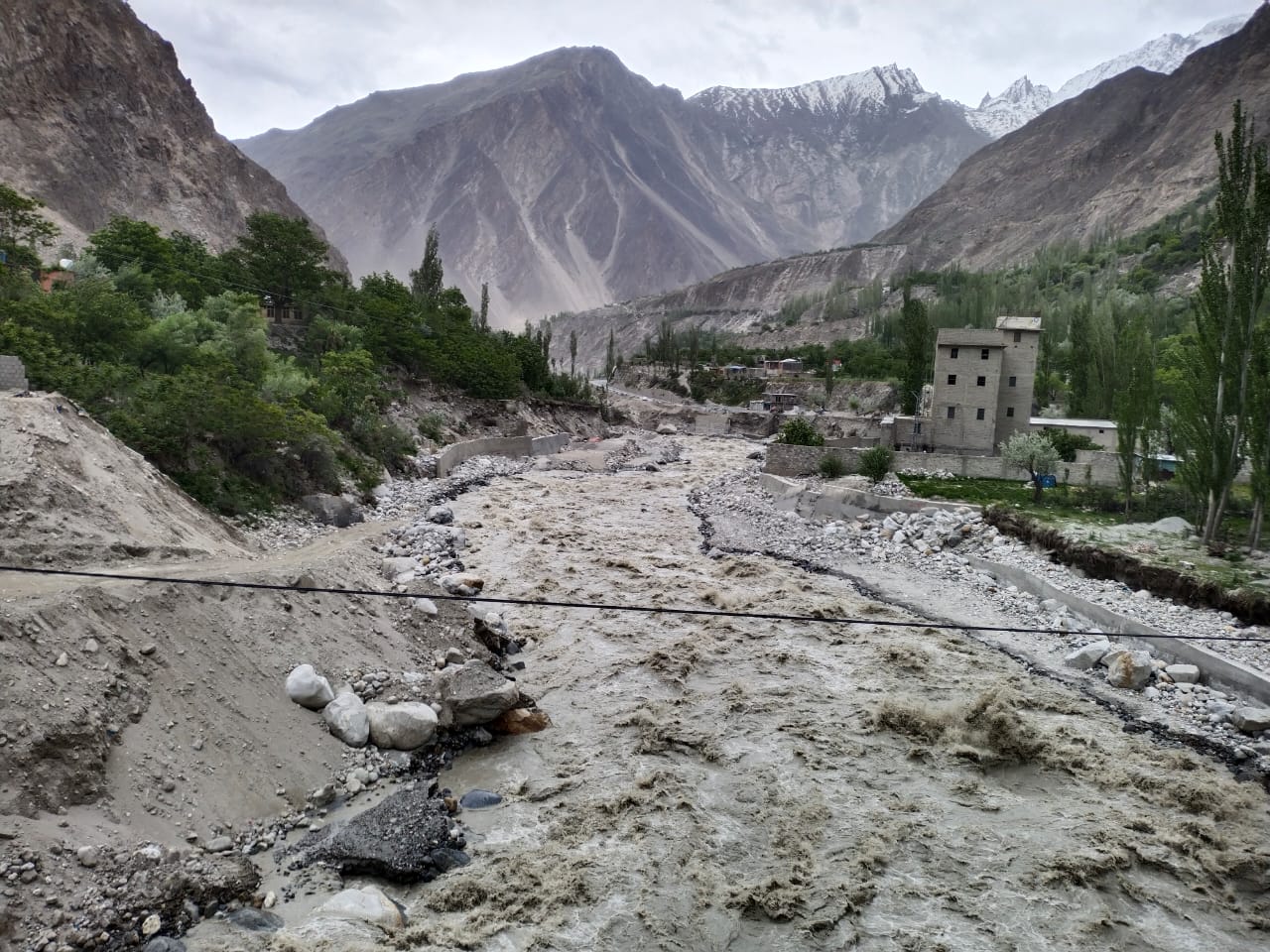
![Avalanche rescue training in Chitral [image courtesy: AKAH-P]](https://dialogue.earth/content/uploads/2021/02/Avalanche-rescue-training-Yarkhund-Last-Chitral-300x225.jpg)

